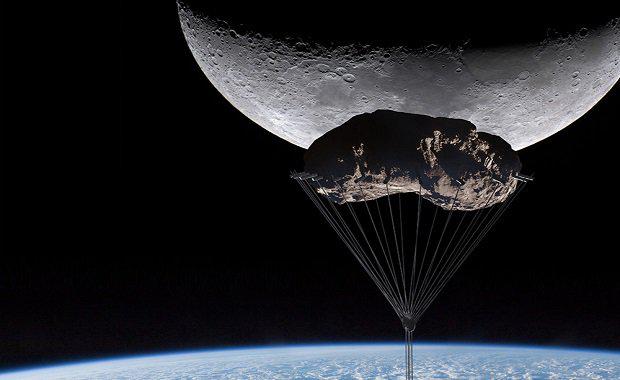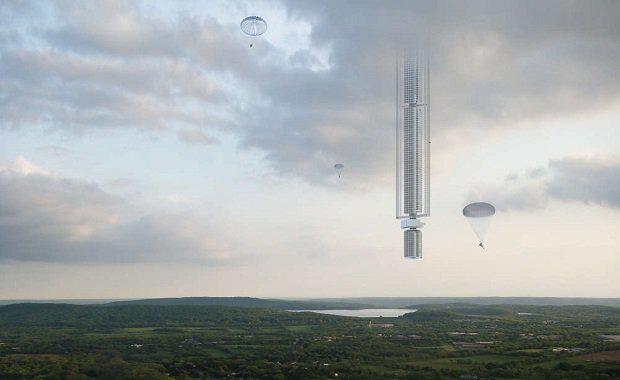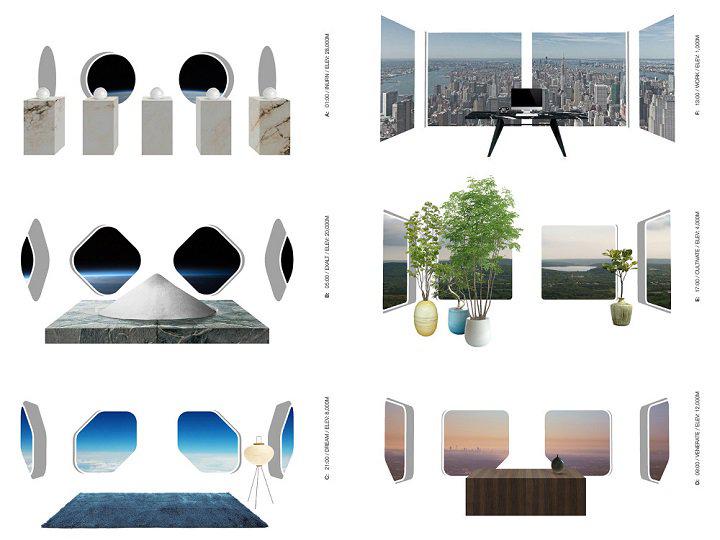It’s A Bird, It’s A Plane, It’s…Out Of This World
A New York architecture firm has unveiled plans for Analemma Tower, which would become the world’s tallest building ever by suspending from an orbiting asteroid some 50,000 km above the Earth.
By placing a large asteroid into orbit over earth, a high strength cable can be lowered towards the surface of earth from which a super tall tower can be suspended, according to the designers, Clouds Architecture Office.
Since this new tower typology is suspended in the air, it can be constructed anywhere in the world and transported to its final location.

The proposal calls for Analemma to be constructed over Dubai, which has proven to be a specialist in tall building construction at one fifth the cost of New York City construction.
“Business is conducted at the lower end of the tower, while sleeping quarters are approximately two thirds of the way up," the designers said.
"Devotional activities are scattered along the highest reaches, while surface transfer points take advantage of high topography. The size and shape of windows changes with height to account for pressure and temperature differentials. The amount of daylight increases by 40 minutes at the top of the tower due to the curvature of the earth.”

According to the designers, the orbital path would swing the tower in a figure eight pattern between the northern and southern hemispheres each day, taking residents on a tour through different parts of the world - all in just a 24 hour orbital cycle.
At the top and bottom of the figure eight motion, the building would theoretically reach its slowest speed, which would allow residents the safest opportunity to interact with the planet’s surface.
Such interaction, however, would only be possible with the use of a parachute, which the designers have said will be required should residents wish to leave the moving building.

In order to maintain power, Analemma Tower would reportedly need to rely on ‘space-based’ solar panels that would be installed to harness a constant exposure to sunlight.
The building’s water supply would be primarily collected from cloud condensation and rain water, which would then be filtered and recycled in a semi-closed loop system.
Despite the obvious sense of science-fiction that surrounds such ambitious designs, Clouds Architecture Office do not believe that the concept is as outlandish as many may think.
“Manipulating asteroids is no longer relegated to science fiction," they said.
“In 2015 the European Space Agency sparked a new round of investment in asteroid mining concerns by proving with its Rosetta mission that it's possible to rendezvous and land on a spinning comet.

“NASA has scheduled an asteroid retrieval mission for 2021 which aims to prove the feasibility of capturing and relocating an asteroid.”
While researching atmospheric conditions for this project, Clouds Architecture Office realised that there would be a tangible height limit beyond which people would not tolerate living due to the extreme conditions.
“For example, while there may be a benefit to having 45 extra minutes of daylight at an elevation of 32,000 meters, the near vacuum and -40C temperature would prevent people from going outside without a protective suit.
“Then again, astronauts have continually occupied the space station for decades, so perhaps it’s not so bad?”
Designs and proposals at this point are all speculative, the designers admit, but it certainly does not mean there is any speculation to their ambitions and imagination.

Images courtesy Clouds Architecture Office.












